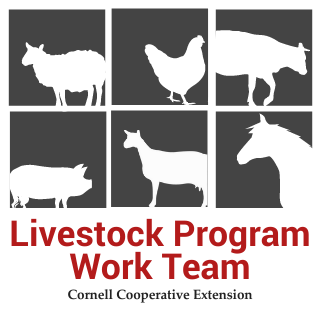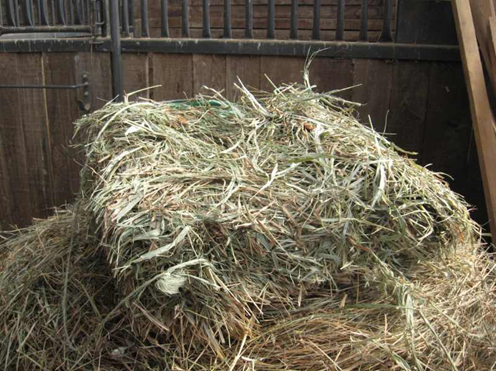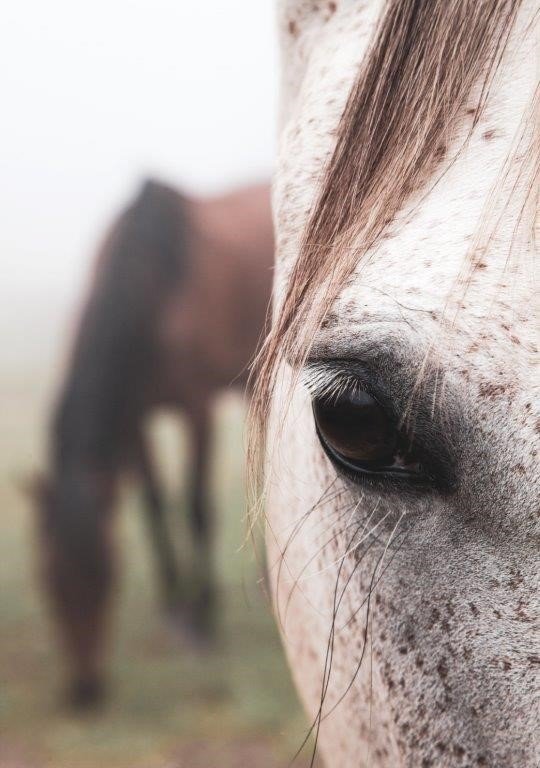

Upcoming Events
It’s that time of year when livestock owners are planning to transition from pasture to stored feeds for the winter. I often receive questions about which is the right grain supplement for horses or ponies, but rarely asked about what the correct forage choice is. To address the question of supplementation we should begin with understanding what is available in the hay we plan to feed as that will make up the majority if not meeting the total nutritional needs of our equine companions.
Every summer, I get calls from folks wondering why there are nearly microscopic bugs covering the walls and floors of their feed storage areas and their feed buckets. Looking for a cause, many easily trace it back to their bags of grain. The dust on the exterior of the affected bags appears as if it's moving in a gentle breeze, and there may be a thick layer of dust coating the inside of the feed bags. On closer inspection, it's apparent that the dust is actually hundreds of thousands of nearly microscopic grey-brown looking mites. These are grain mites.
Attention horse owners and hay producers! The Equine Subgroup of the statewide CCE Livestock Program Work Team wants your assistance in understanding hay sales and purchases within our state for horses.
About Horses
Horses are an important component of livestock in New York State. Racing was believed to be the largest portion of the horse industry nationally and in the state however, the 2017 Economic Impact Study of the U.S. Horse Industry, performed by the American Horse Council, showed that the recreational horse industry has become the leader. Of the over 200,000 horses residing in New York, 70% are involved in showing and recreation with a value of over $2 billion dollars.
The leading use of equines is for pleasure. Equine used for breeding was second followed closely by equine used for the competition of sport (excludes racing). New York State Department of Environmental Conservation and Office of Parks and Recreation provides some of the best equine trail systems in the nation. NYS Ag & Markets provides information about a variety of diseases that horse owners should be aware of and regulations horses owners need to comply with.
Equine Industry Insights
The New York State equine industry is the second-largest agriculture commodity after dairy.
Our horse industry produces goods and services valued at $2.4 billion annually, and the national industry has a $4.8 billion impact on the New York economy.
Our state is home to nine racetracks.
The industry provides 35,773 full-time equivalent jobs in New York. There are 258,100 New Yorkers involved in the industry as Owners, Service Providers, Employees, Volunteers, and Spectators.

News
It’s that time of year when livestock owners are planning to transition from pasture to stored feeds for the winter. I often receive questions about which is the right grain supplement for horses or ponies, but rarely asked about what the correct forage choice is. To address the question of supplementation we should begin with understanding what is available in the hay we plan to feed as that will make up the majority if not meeting the total nutritional needs of our equine companions.
Every summer, I get calls from folks wondering why there are nearly microscopic bugs covering the walls and floors of their feed storage areas and their feed buckets. Looking for a cause, many easily trace it back to their bags of grain. The dust on the exterior of the affected bags appears as if it's moving in a gentle breeze, and there may be a thick layer of dust coating the inside of the feed bags. On closer inspection, it's apparent that the dust is actually hundreds of thousands of nearly microscopic grey-brown looking mites. These are grain mites.
Attention horse owners and hay producers! The Equine Subgroup of the statewide CCE Livestock Program Work Team wants your assistance in understanding hay sales and purchases within our state for horses.
A virtual series hosted by Cornell’s Equine Hospital, Cornell Cooperative Extension and the New York State 4-H Horse Program.
Area Extension Educator Kevin Ganoe describes field crop management and how it applies to horse owners and their properties. This presentation includes a discussion of long and short grasses, plant growth, and pasture recovery.
In this presentation by equine lawyer Sarah Collier, short-term and long-term emergency planning is discussed, in addition to the tools accessible to all landowners to plan most effectively. With prior planning, one is able to enable their farm to continue functioning amidst unforeseen circumstances.
Sarah E. Fessenden, Business Development Manager, Forage and Soils- Dairy One and Lynn Bliven, Ag & Natural Resources Issue Leader- CCE Allegany. The cost per ton or bale is not an indicator of value. Forage analysis will make it easier to match nutrient requirements for your horses. Join Sarah E. Fessenden and Lynn Bliven for a discussion on interpreting forage analysis reports and factors that impact evaluation of hay quality.
Katharyn Mitchell, DVM, PhD, BVSc, ACVIM (LAIM), Assistant Professor, Section of Large Animal Internal Medicine presents for the Equine Seminar Series.
Ken Estes, Jr., Ag Program Leader- CCE Livingston. In this session we will explore the best management practices to provide and maintain forage for your livestock in this case horses in a pasture. With topics including soil health, plant selection, loading density, mowing, dragging, resting, fertilizing, and weed control. We will also look at new trends in pasture design with dry lots and track pastures.
Dr. Lindsay Goodale, Lecturer- Cornell CALS. Dr. Goodale will describe some common issues we encounter when feeding horses, including dealing with equine metabolic diseases, obesity, gastric ulcers, and other challenging scenarios. We'll also discuss some behavioral considerations that can influence our feeding approaches.
Main topics:
Grazing plans
Manage pasture trouble spots
How to make high-quality baleage
Dr. Lindsay Goodale is an equine veterinarian who holds teaching and extension roles at Cornell University’s College of Agriculture and Life Sciences. She teaches courses in equine biology and management, domestic animal behavior and animal welfare science.
Main topics:
Grazing plans
Manage pasture trouble spots
How to make high-quality baleage
Whether you will be transporting your horse down the road or across the country, you should know and do a number of things in order to make the trip safe and rewarding.
Dr. Kelly Knickelbein is a graduate of the University of Pennsylvania School of Veterinary Medicine. She completed an internship in equine medicine and surgery at Rhinebeck Equine and a comparative ophthalmology internship at the University of California-Davis.
Learning to properly manage carcasses and slaughter waste is a critical skill for livestock producers and meat processors alike. In this webinar, CCE Educator Lynn Bliven covers the essentials to avoid environmental contamination and human safety hazards.











